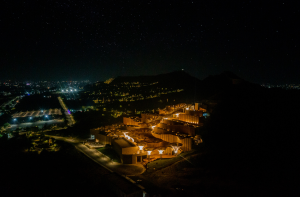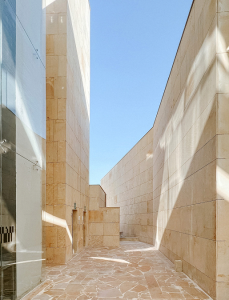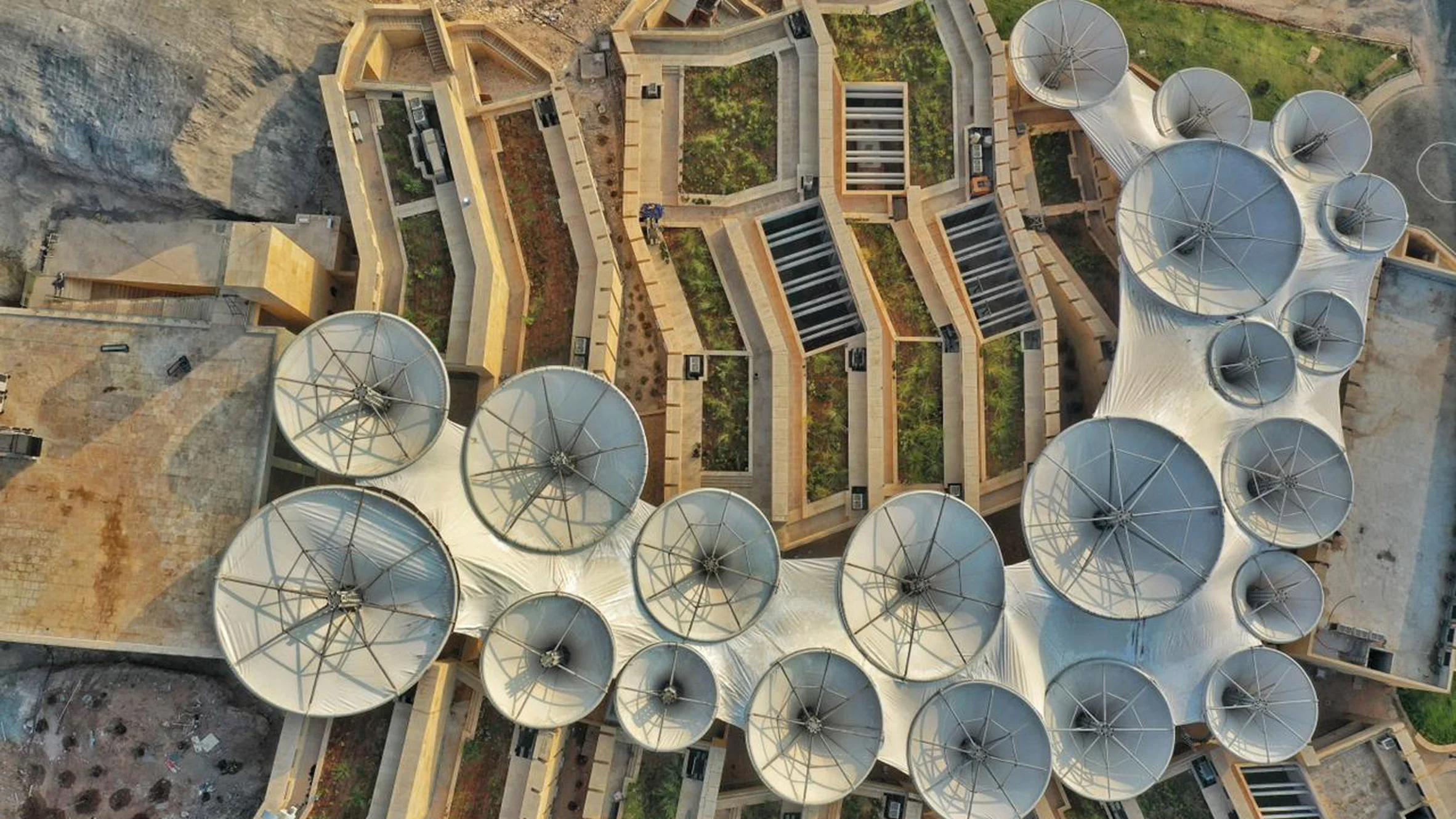Exploring Smritivan Earthquake Museum: A Tribute to Resilience and Remembrance
Vastushilpa Consultants, an architecture studio, has designed a museum and memorial in India to honor the victims of the 2001 Gujarat earthquake and celebrate the resilience of the local Kutch community. The project aims to create not only a museum but also a civic space where citizens can gather and celebrate various festivals. The design acknowledges the significant role of such institutions in city life and ensures that architecture contributes to civic engagement. The Smritivan memorial also addresses the need for a green space and park in the city. The museum’s galleries showcase the crafts and skills of the Kutch region. 
A polytetrafluoroethylene (PTFE) canopy with funnel-shaped structures provides shade for the public space and directs rainwater to collection points for harvesting. The steep slope of the hill required a sensitive approach to placing the building without disturbing the landscape. The hill is part of the cultural heritage of the people, so constructing a large box-like structure was deemed inappropriate. Instead, the contours of the hill informed an alternative design approach, recalling the relic of the fort wall on the hill. The building’s mass follows the hill’s contours, zig-zagging upward like a natural path used by animals or humans to climb a hill, or like a pilgrimage route to a holy site.
The heart of the museum is this gradual ascent, a 50-meter climb punctuated by various galleries. The spine of the museum acts like a veranda, allowing visitors to pause, reflect, and absorb the landscape. This tensile structure creates a soft glow over the monolithic buildings, which are covered in local stone quarried near the site. The central spine of the museum functions as a civic space even when the galleries are closed.

The museum is located at one end of the fort, which runs along a ridge. At the other end, the studio designed a hilltop platform as a reflective space. This platform features a circular reinforced concrete structure with wooden batten shuttering and symbols used by Kutch farmers imprinted on the concrete surface. The structure functions as a lunisolar calendar, charting the movement of the sun and moon, with cuts around the rim marking culturally significant days
The studio added that the effects of water retention and distribution have transformed the land, allowing trees to take root and changing the landscape. Now, wild animals can be spotted, and bird calls can be heard in the area. The sound and temperature of the landscape have impacted the city as a whole.
The reservoirs are constructed from gabions, which are structures made without mortar. This design enables them to capture rainwater from watersheds while allowing it to slowly seep into the ground. This slow release of water benefits the root systems of trees. Over time, the gaps between the stones in the gabions become filled with alluvium carried by the water, and seeds trapped in the alluvium sprout into plants. This natural process not only strengthens the gabion structure but also helps it blend seamlessly into the landscape over time.
The museum, located in Bhuj, serves as a gateway to the city’s rich heritage, culture, and crafts, while also connecting visitors to the numerous villages and wildlife sanctuaries of Kutch. It highlights the origins of Kutch’s diverse crafts and skills, organized thematically across various galleries. The central spine of the museum functions like a verandah, enabling public events to occur even when the museum itself is closed. The architectural complex and plazas are integrated into the terrain of the Bhujiyo Hills, offering visitors an experience akin to a winding path to the summit. Terraces and volumes are interconnected by these open plazas, enhancing the journey.
What are your thoughts? Tell us in the comments below.
References:
Abdel, H. (2023, April 14). Smritivan Earthquake Memorial Museum / Vastushilpa Sangath. Retrieved from ArchDaily: https://www.archdaily.com/999425/smritivan-earthquake-memorial-museum-vastushilpa-sangath
